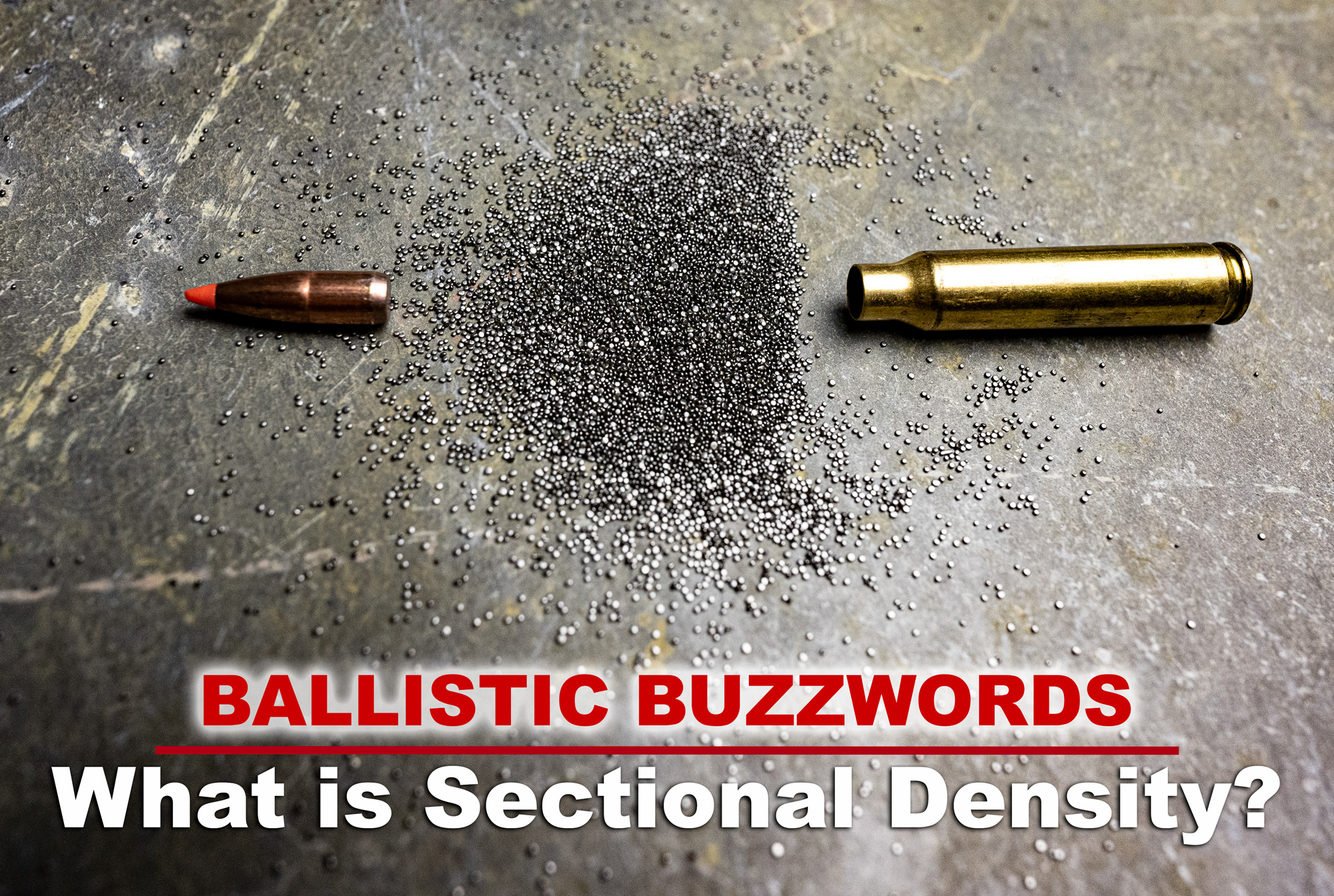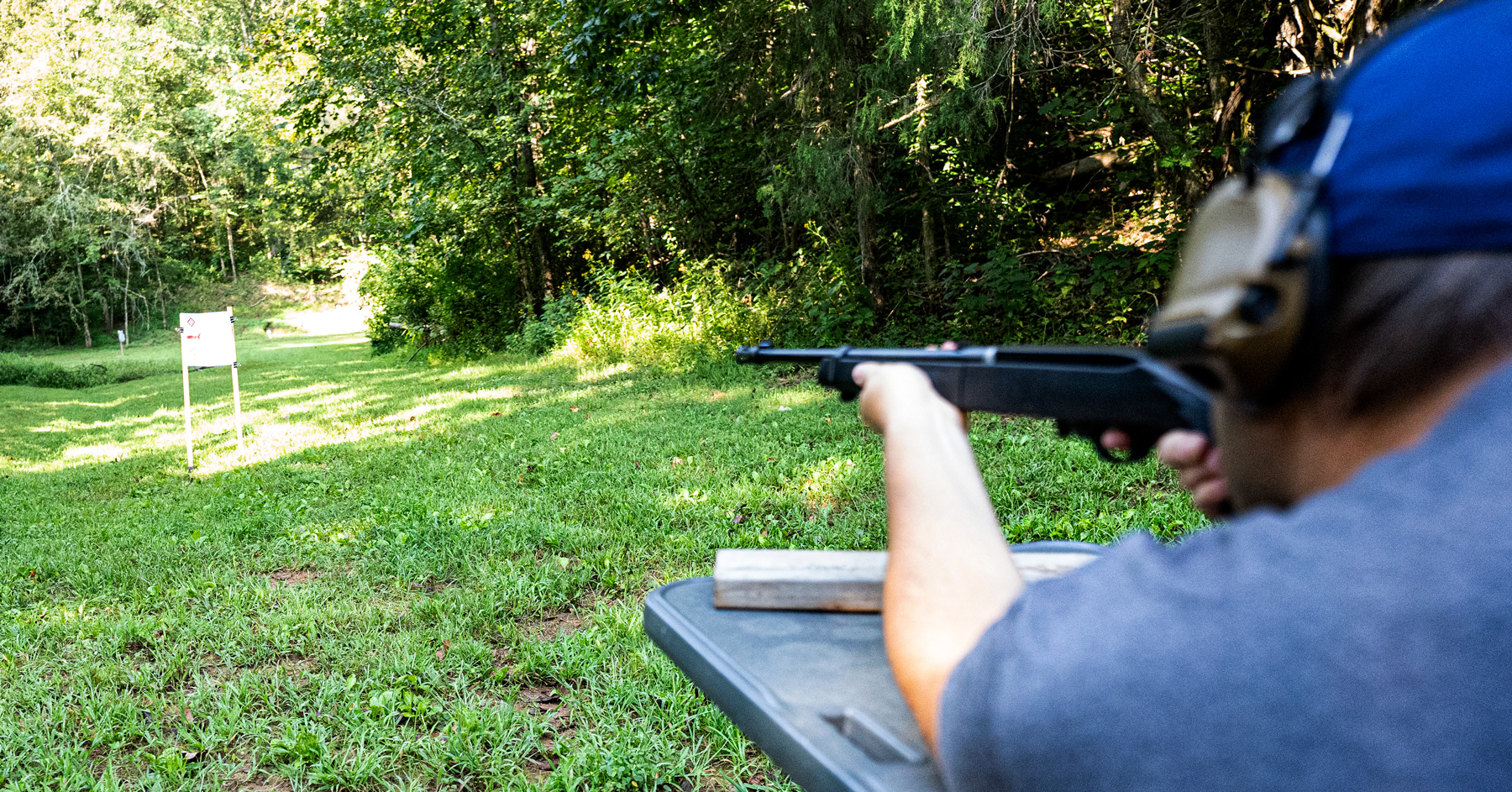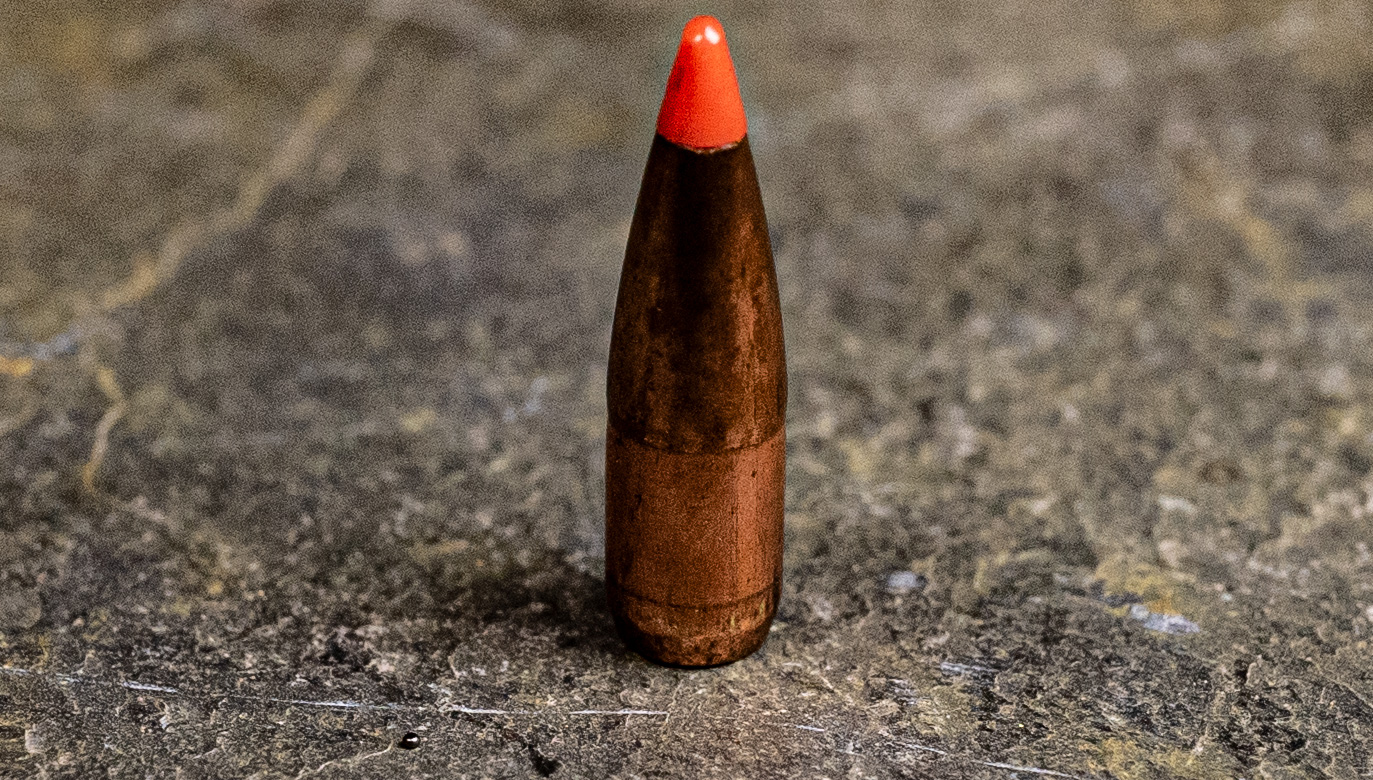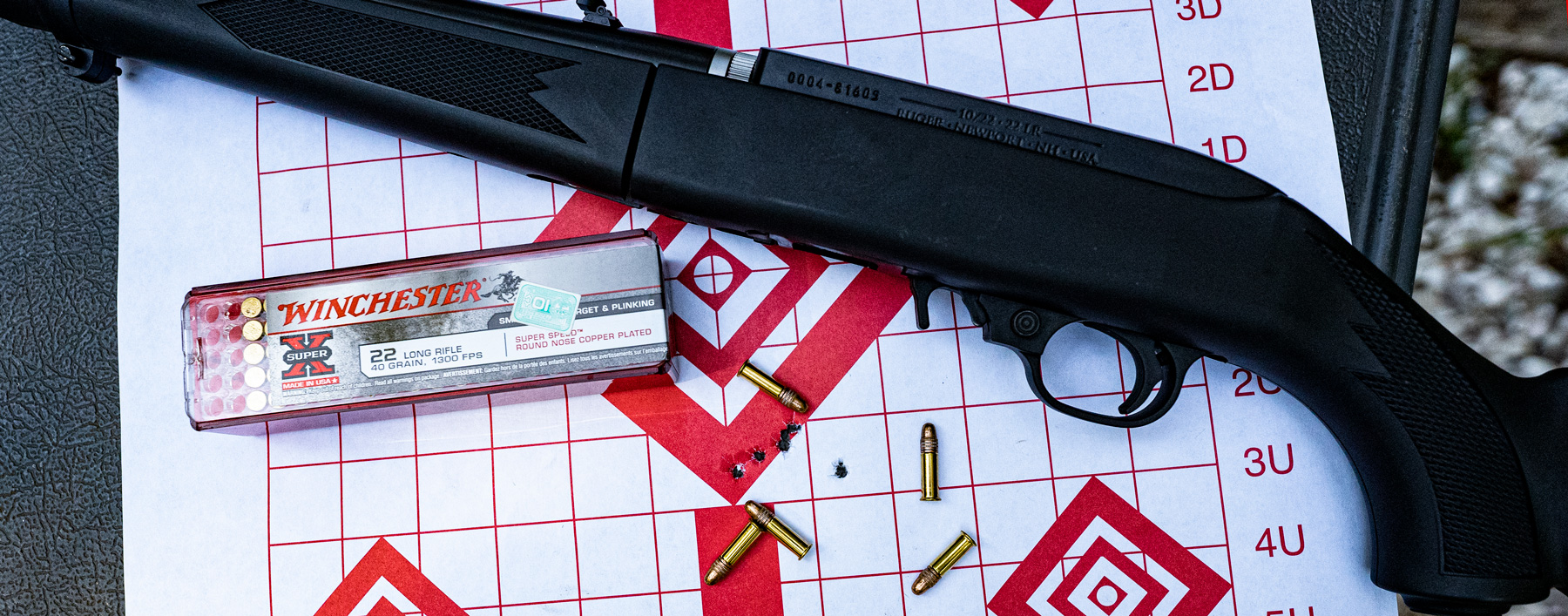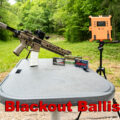Sectional density is a big part of ballistics, especially for hunters. In this article we’ll explain what it is and why it is important.
“Sectional Density” (SD) sounds complicated, and it involves more math than most people can do in their head, but it describes a very simple concept. In a single number, SD reflects how deeply a bullet can penetrate.
What is Sectional Density?
Sectional density is the mass of a bullet divided by the area that it covers. If two bullets have the same mass but one is physically larger than the other, its sectional density will likely be higher. Sectional density plays a large role in how well a bullet penetrates a target. Sectional density and ballistic coefficient are somewhat related. While sectional density relates to targets, ballistic coefficient is related to how well a bullet cuts through the air toward its target.
The Sectional Density Equation
A bullet’s sectional density is determined entirely from two factors: weight and diameter.
You can calculate it with this handy formula:
SD = (weight in grains) / 7000 * (diameter in inches) * (diameter in inches)
SD shows how well an object’s weight is distributed for it to overcome resistance from the thing that it hits. Think of it like this. You have two cone-shaped lawn darts, which share identical weights. One is three inches long, so it is shaped like an open umbrella. The other is twelve inches long and pointy as a spear tip. You drop both from eye level. Which lawn dart do you think will stick deeper into the ground?
When you consider bullets of the same caliber, it is only their weights that give them different SD’s. For instance, our most commonly sold 5.56 NATO ammo is often available with a 55, 62, or 77 grain bullet. Its SD can therefore be as follows:
| Bullet Diameter | .224" | .224" | .224" |
| Weight | 55 Grain | 62 Grain | 77 Grain |
| Sectional Density | .157 | .177 | .219 |
Why Sectional Density Matters
To reiterate, a bullet’s SD represents how deeply it can penetrate its target. A bullet’s SD is most relevant when it comes to hunting. The larger the animal you are shooting, the higher your bullet’s SD must be to penetrate to the depth where the vital organs are located.
Minimum Sectional Densities for Game
| Small Game | .180 |
| Medium Game | .200-.230 |
| Large Game | .270 - .280 |
| Very Large Game | .300+ |
These are approximate, ballpark values. You may prefer slightly different values for each size of game you hunt.
A larger caliber conveys the added advantage of creating a wider hole. Two bullets with identical sectional densities could theoretically differ drastically in weight and diameter, yet the the wider one would be more debilitating and less likely to pass through its target, wasting energy in the process.
The following table provides cartridges with their bullet diameters, weights, and SD’s. You will see that with greater mass relative to diameter, bullets becomes better suited for hunting larger and larger game. (Bear in mind that most rounds are available with multiple bullet weights and therefore significantly different SD’s.)
Common Sectional Densities for Calibers
| Caliber | Diameter | Weight | SD |
|---|---|---|---|
| 17 HMR | .195 | 17 | .064 |
| 22 Short | .222 | 29 | .084 |
| 22 WMR | .224 | 40 | .114 |
| 22 LR | .223 | 40 | .115 |
| 204 Ruger | .204 | 40 | .137 |
| 45 Long Colt | .452 | 200 | .14 |
| 223 Rem/5.56x45 | .224 | 55 | .157 |
| 30 Carbine | .308 | 110 | .166 |
| 50 Action Express | .5 | 300 | .171 |
| 450 Bushmaster | .452 | 250 | .175 |
| 357 Magnum | .357 | 158 | .177 |
| 243 Win | .243 | 75 | .181 |
| 7.62x39 | .312 | 124 | .182 |
| 44 Magnum | .43 | 240 | .185 |
| 300 BLK | .308 | 125 | .188 |
| 50 Beuwulf | .5 | 335 | .191 |
| 45-70 | .458 | 300 | .204 |
| 454 Casull | .452 | 300 | .21 |
| 6.5 Grendel | .264 | 123 | .252 |
| 308 Win | .308 | 168 | .253 |
| 303 British | .311 | 174 | .257 |
| 270 Win | .277 | 140 | .261 |
| 30-06 | .308 | 180 | .271 |
| 700 Nitro Exp. | .7 | 1000 | .292 |
| 6.5 Creedmoor | .264 | 143 | .293 |
| 338 Lap Mag | .338 | 250 | .313 |
| 50 BMG | .51 | 700 | .384 |
